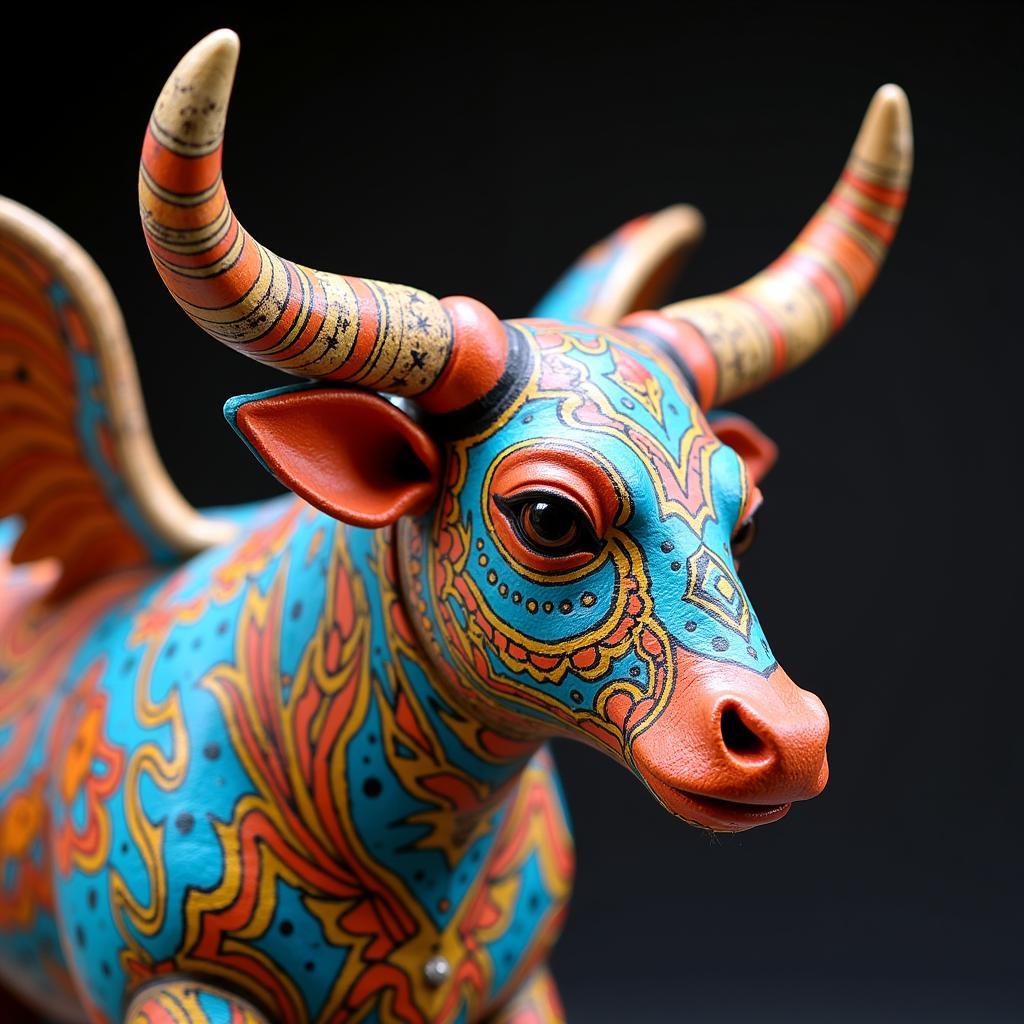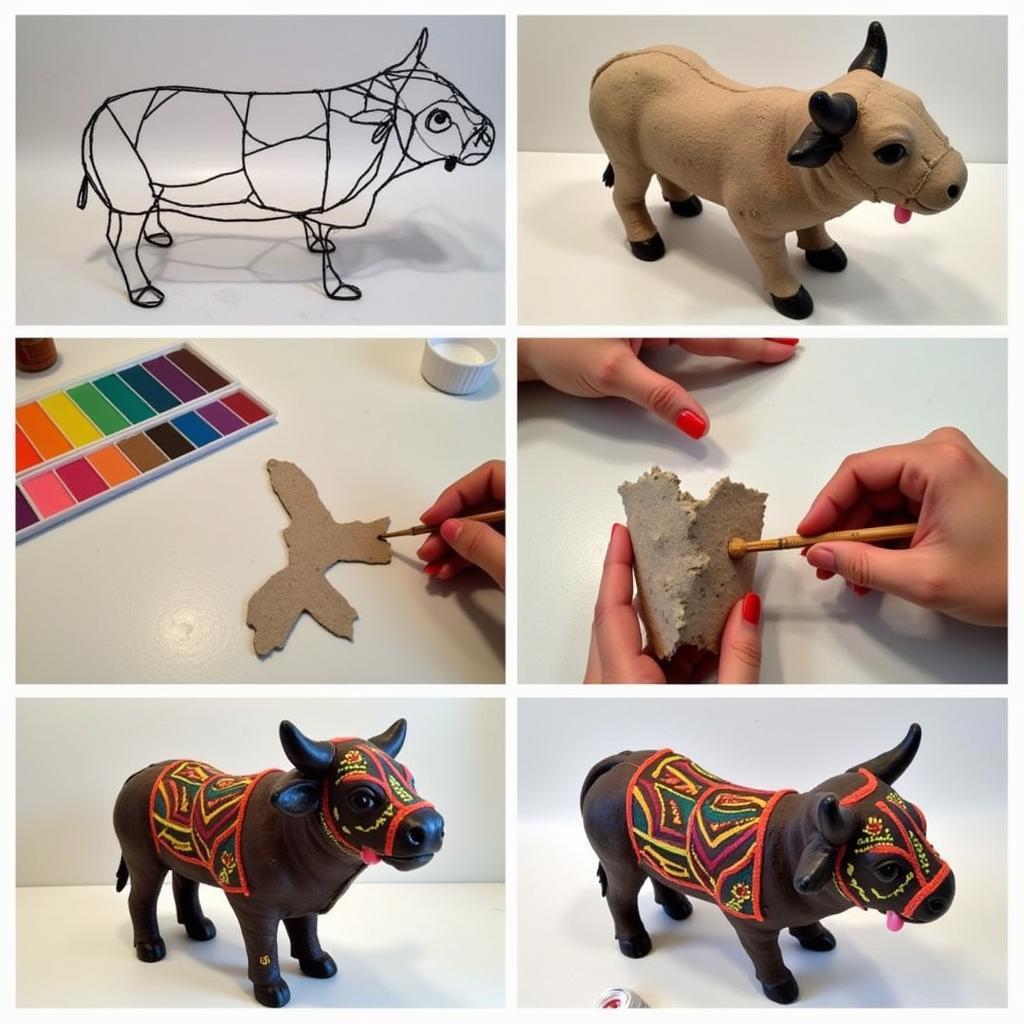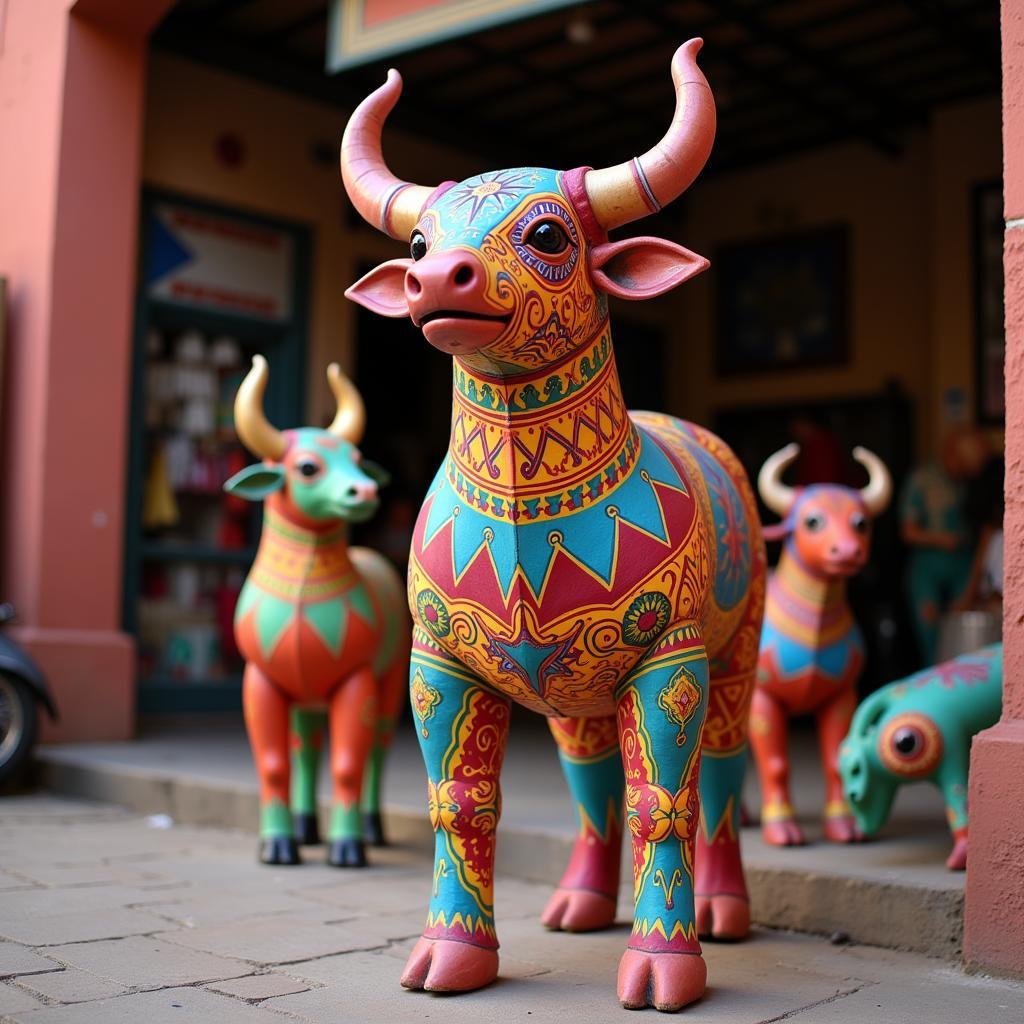Unveiling the Mystique of the Alebrije Bull
October 30, 2024The vibrant and fantastical world of alebrijes captures the imagination, and the Alebrije Bull, with its bold presence and intricate details, stands out as a particularly captivating figure. These handcrafted Mexican folk art sculptures are more than just colorful decorations; they represent a rich cultural heritage and a unique artistic vision. Let’s delve into the fascinating story behind these mythical creatures, exploring their symbolism, creation process, and enduring appeal.
Understanding the Alebrije Bull’s Significance
Alebrijes, including the striking alebrije bull, originated in the dreams of Pedro Linares López, a Mexican artisan from Mexico City. In the 1930s, while suffering from a severe illness, Linares experienced vivid hallucinations of fantastical creatures with vibrant colors and unusual combinations of animal parts. Upon his recovery, he began recreating these dreamlike figures using papier-mâché, giving birth to the art form we know today. The alebrije bull, often depicted with horns, wings, and a powerful stance, embodies strength, resilience, and a connection to the spiritual realm.
The Symbolism of the Bull in Alebrije Art
The bull, a powerful symbol in many cultures, takes on a unique meaning in alebrije art. It often represents virility, courage, and the earth’s life-giving force. In some interpretations, the alebrije bull can also symbolize protection and guardianship. The vibrant colors and intricate patterns further enhance its symbolic meaning, adding layers of cultural and personal significance. Each color and pattern can hold a specific meaning, making each alebrije bull a unique and personalized expression of the artisan’s vision.
 Alebrije Bull with Vibrant Colors and Intricate Patterns
Alebrije Bull with Vibrant Colors and Intricate Patterns
Crafting an Alebrije Bull: A Blend of Tradition and Imagination
Creating an alebrije bull is a meticulous process that requires skill, patience, and a deep understanding of the tradition. Artisans typically begin by creating a framework from wire or wood, then layering papier-mâché over the structure. Once the form is dry, it’s carefully painted with vibrant colors and intricate patterns, often inspired by nature, mythology, and the artisan’s own imagination.
From Dream to Reality: The Alebrije Making Process
The process of making an alebrije bull is not just about crafting a sculpture; it’s about bringing a dream to life. It begins with the initial vision, the spark of inspiration that guides the artisan’s hand. Then comes the meticulous process of shaping the papier-mâché, molding the bull’s form, and adding the intricate details that make each piece unique. Finally, the vibrant colors are applied, layer upon layer, transforming the sculpture into a dazzling work of art.
 Alebrije Bull Creation Process Using Papier-Mâché
Alebrije Bull Creation Process Using Papier-Mâché
The Enduring Legacy of the Alebrije Bull
The alebrije bull, along with other alebrije figures, has transcended its folk art origins to become a recognized symbol of Mexican culture. These fantastical creatures have captured the imagination of people worldwide, appearing in films, museums, and art galleries.
Alebrijes in Popular Culture: From Oaxaca to the World Stage
From their origins in Oaxaca, alebrijes have gained international recognition, appearing in films like “Coco” and inspiring artists and designers around the world. Their unique blend of vibrant colors, fantastical designs, and cultural significance has made them a beloved art form, ensuring that the legacy of the alebrije bull continues to thrive.
 Alebrije Bull as a Cultural Symbol of Oaxaca, Mexico
Alebrije Bull as a Cultural Symbol of Oaxaca, Mexico
Conclusion: Embrace the Magic of the Alebrije Bull
The alebrije bull is more than just a colorful sculpture; it’s a symbol of imagination, cultural heritage, and artistic expression. Whether you’re captivated by its vibrant colors, intricate details, or symbolic meaning, the alebrije bull offers a unique glimpse into the magical world of Mexican folk art.
FAQ
-
What is an alebrije bull?
An alebrije bull is a brightly colored, fantastical sculpture of a bull, often with wings and other unusual features, originating from Mexican folk art. -
Who created the first alebrijes?
Pedro Linares López is credited with creating the first alebrijes in the 1930s. -
What materials are used to make alebrijes?
Alebrijes are typically made from papier-mâché, wire, and wood. -
What do the colors and patterns on an alebrije bull symbolize?
The colors and patterns can have various meanings, often related to nature, mythology, or the artisan’s personal interpretation. -
Where can I buy an authentic alebrije bull?
Authentic alebrijes can be purchased from artisans in Oaxaca, Mexico, or from reputable online retailers specializing in Mexican folk art. -
Are all alebrijes bulls?
No, alebrijes can depict a variety of fantastical creatures, combining different animal features. -
How long does it take to make an alebrije bull?
The creation process can vary depending on the size and complexity of the piece, ranging from several days to several weeks.
Need further assistance? Contact us at Phone: 0963418788, Email: [email protected] Or visit us at: 2M4H+PMH, Phường Nghĩa Thành, Gia Nghĩa, Đắk Nông, Việt Nam. We have a 24/7 customer service team.